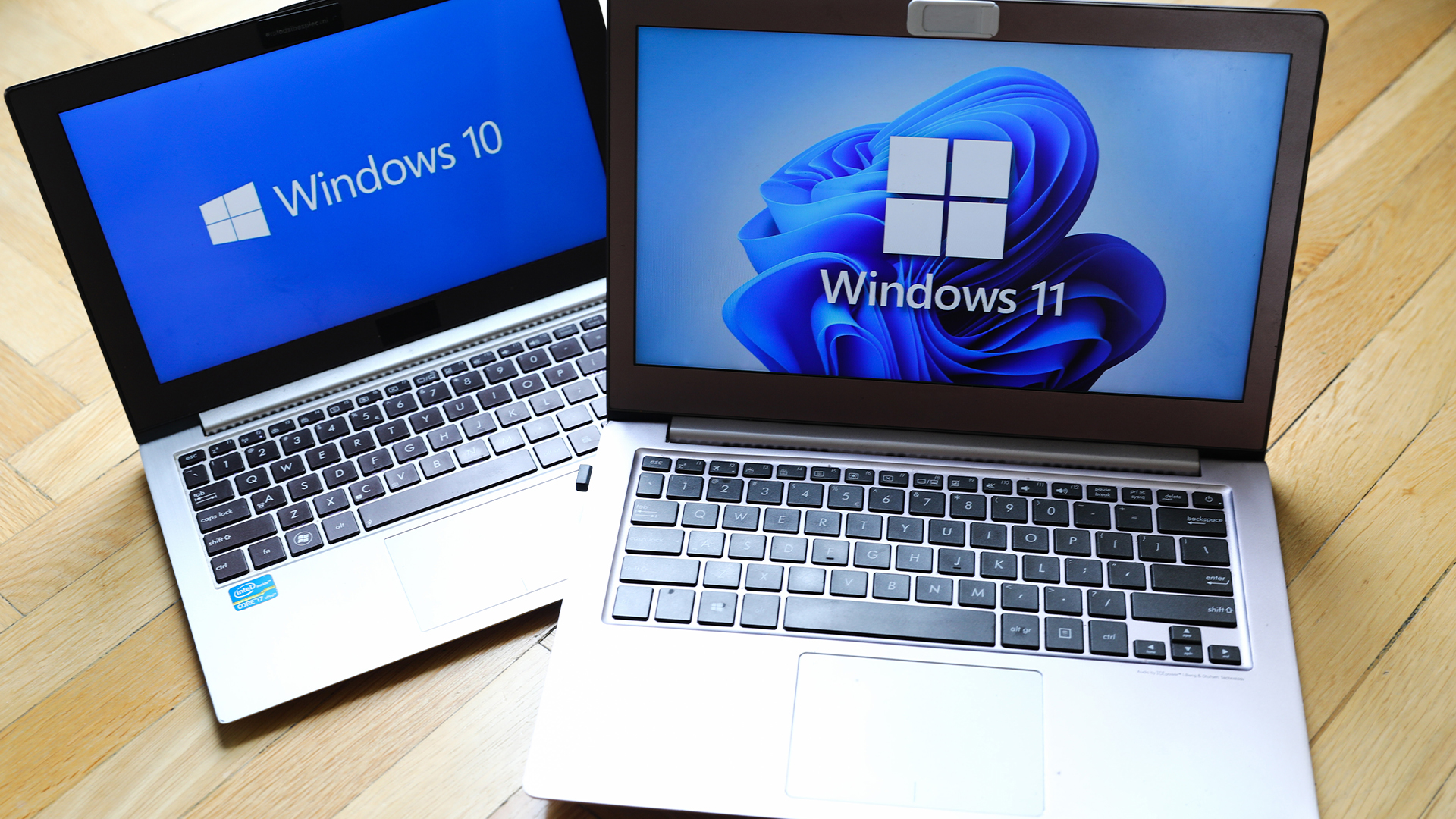What SMEs can learn from the supercomputing revolution
Supercomputing may seem out of reach for the SME, but there are many best practices and technologies filtering down that are worthy of emulation

IT Pro created this content as part of a paid partnership with AMD. The contents of this article are entirely independent and solely reflect the editorial opinion of IT Pro
Once upon a time, supercomputers were rather different to the everyday systems used in business. They are still very specialised machines, but more in scale now than core technology. Even Frontier, the fastest supercomputer in the world and first Exascale system, is based on hardware that is not a million miles away from what you might find in a high-end gaming PC.
That means all levels of computing can learn something from these pioneering machines, but small- and medium-sized enterprises (SMEs) have specific lessons to gain.
Reaping the benefits
One factor that has affected all sizes of business over the last couple of years has been the switch to greater remote and hybrid working. An enabling factor here has been the growth in availability and sophistication of public, private and hybrid cloud infrastructure. This can provide the continuity backbone of software services that enables employees to enjoy the same employment environment experience whether they are working from home or in the office.
The underlying infrastructure for cloud computing can enjoy some of the same benefits as supercomputers through choosing appropriate hardware platforms. In particular, a denser server CPU platform can deliver a lower environmental impact and lower cost for the same level of service, or more compute power for the same money. If your remote workloads require GPU acceleration, this is now an option from some cloud providers too, and there are further benefits here from choosing an appropriate platform.
The latest supercomputers with Exascale capabilities or close to this have taken advantage of the greater density afforded by 3rd Gen AMD EPYC processors, which offer up to 64 cores per socket (so up to 128 cores and 256 threads per server) and up to 4TB of RAM. While this has benefitted the raw compute required for supercomputing workloads, it can also enhance the delivery of virtual machines and containers in a cloud environment. The more CPU cores a single rackmount server in a cloud infrastructure data centre can deliver, the more instances it can support, and it will also enable larger VMs with more cores.
With AMD’s platform price enabling servers with more high-performance cores for the money than competitors, and the lower energy running costs afforded by the higher density, cloud providers have been able to offer services with lower subscription fees than competitor platforms. Just as the latest supercomputers can deliver more compute performance with lower power consumption for the money by choosing AMD EPYC processors, cloud providers offer AMD EPYC CPU-powered instances with similar performance to other platforms but at a lower cost, making them a very effective choice.
For workloads requiring GPU acceleration, 3rd Gen AMD EPYC processors deliver 128 lanes of PCI Express 4.0, which enables the server hardware to support up to eight GPUs at full speed. The VMs can then offer workstation-grade graphics acceleration to remote virtual desktops. This has opened up the possibility of content creation in the cloud, enabling designers on the road to travel light and access a secure, powerful workstation environment using a relatively low-powered client system, even a notebook, over the internet.
Processor power
AMD has also just released its 4th Gen EPYC processor, which increases the maximum number of cores per socket to 96 from 64, further improving density and with 50% more memory, for a maximum of 6TB. This will be the first AMD EPYC platform to support DDR5, with twelve channels of 4,800MHz ECC RAM available. This will greatly enhance bandwidth, for even better performance when running memory-intensive workloads such as database services. The new processor will be available from AMD’s existing cloud partners, including AWS, Alibaba Cloud, Google Cloud, Microsoft Azure, Oracle Cloud, and Tencent Cloud.
Further down AMD’s roadmap, 128-core CPUs are due later in 2023. This will enable a dual-socket system to offer 256 cores (512 threads), twice as many as when using the current 3rd Gen AMD EPYC CPUs. For cloud providers, this will enable another step change in density, with the ability to offer high-performance instances at even more competitive prices compared to alternative platforms. Future supercomputers will similarly benefit from the greater density to deliver even greater compute power from a cluster.
Beyond everyday productivity, however, the ability to deploy AI/machine learning-empowered workloads is another area where emulating the latest trends in supercomputing could pay dividends for SMEs. There is a considerable emphasis on GPU power in supercomputers able to achieve Exascale performance levels, with Frontier for example getting most of its FLOPS from accelerators (AMD Instinct MI250, to be specific) rather than the host CPUs. Scientific workloads are being ported over to take advantage of this GPU power via environments such as Siemens CodeBench Lite, which facilitates support for the necessary software calls without the need for extremely low-level developing skills.
While GPU acceleration is taking these scientific workloads to a new level of performance, and enabling the use of much larger datasets, the focus on GPU power is also helping to accelerate the trend towards mainstream use of AI/ML. In the past, the need for expensive hardware acceleration has kept AI/ML within specialised domains that can benefit most greatly from its application. But the latest supercomputers offer an abundance of performance for this kind of workload, which is encouraging wider application. The greater affordability of GPUs and high-density platforms such as provided by AMD EPYC processor-powered servers have enabled cloud providers to offer instances tailored for AI/ML workloads. This is an area set to expand. With the pay-as-you-go model of the cloud, even SMEs will be able to consider AI/ML to empower analytics insights across datasets.
The computing revolution of the last few decades has been a consistent story of more performance for less money. This is the fundamental implication of the infamous Moore’s Law. But in the last couple of years, the fact that the fastest supercomputers are employing scaled-up and optimised variants of similar core platforms to more everyday systems has created more of a continuum of capabilities. Now, innovation in software and approaches at the very highest level can filter down more easily to SMEs. Particularly through cloud service providers, SMEs can gain benefit from powerful virtual machines running on supercomputer-grade hardware for affordable operating costs, as well as starting to take advantage of the burgeoning adoption of AI/ML.
IT Pro created this content as part of a paid partnership with AMD. The contents of this article are entirely independent and solely reflect the editorial opinion of IT Pro
Sign up today and you will receive a free copy of our Future Focus 2025 report - the leading guidance on AI, cybersecurity and other IT challenges as per 700+ senior executives
ITPro is a global business technology website providing the latest news, analysis, and business insight for IT decision-makers. Whether it's cyber security, cloud computing, IT infrastructure, or business strategy, we aim to equip leaders with the data they need to make informed IT investments.
For regular updates delivered to your inbox and social feeds, be sure to sign up to our daily newsletter and follow on us LinkedIn and Twitter.
-
 How the UK public sector could benefit from strategic channel partnerships
How the UK public sector could benefit from strategic channel partnershipsIndustry Insights Is the channel the answer to the growing cost vs budget problem facing the public sector?
-
 Microsoft wants to replace C and C++ with Rust by 2030
Microsoft wants to replace C and C++ with Rust by 2030News Windows won’t be rewritten in Rust using AI, according to a senior Microsoft engineer, but the company still has bold plans for embracing the popular programming language
-
 Why hardware matters when it comes to moving from AI fiction to AI fact
Why hardware matters when it comes to moving from AI fiction to AI factSupported GPUs, networking, and smart devices are as much the story of AI success as software
-
 Embedded processors in industry, cloud, and beyond
Embedded processors in industry, cloud, and beyondSupported From the edge to power grids, embedded processors keep data flowing for all enterprises
-
 What enterprises need to be Windows 11 ready
What enterprises need to be Windows 11 readySupported Hardware purchasing will play a key role in delivering success during the Windows 11 migration rush
-
 Should AI PCs be part of your next hardware refresh?
Should AI PCs be part of your next hardware refresh?Supported AI PCs are fast becoming a business staple and a surefire way to future-proof your business
-
 How IT decision makers can prepare for the AI Age
How IT decision makers can prepare for the AI AgeSupported Whether it’s the hardware in your office or what’s powering your virtual machines, the right processors are the key to success
-
 Why the CPU you chose is the key to Windows 11
Why the CPU you chose is the key to Windows 11Supported The end of Windows 10 is on the horizon – it’s time to upgrade to an fTPM-protected processor
-
 AMD Advancing AI live: All the news and updates as they happened
AMD Advancing AI live: All the news and updates as they happenedLive Blog ITPro has been live on the ground at the AMD Advancing AI conference in San Francisco this week – here's everything we learned in the big keynote with CEO Lisa Su
-
 AMD takes the wraps off new Instinct MI300X chips for AI workloads
AMD takes the wraps off new Instinct MI300X chips for AI workloadsSupported The data center-focused hardware will enable customers to run high-performance AI and HPC workloads

